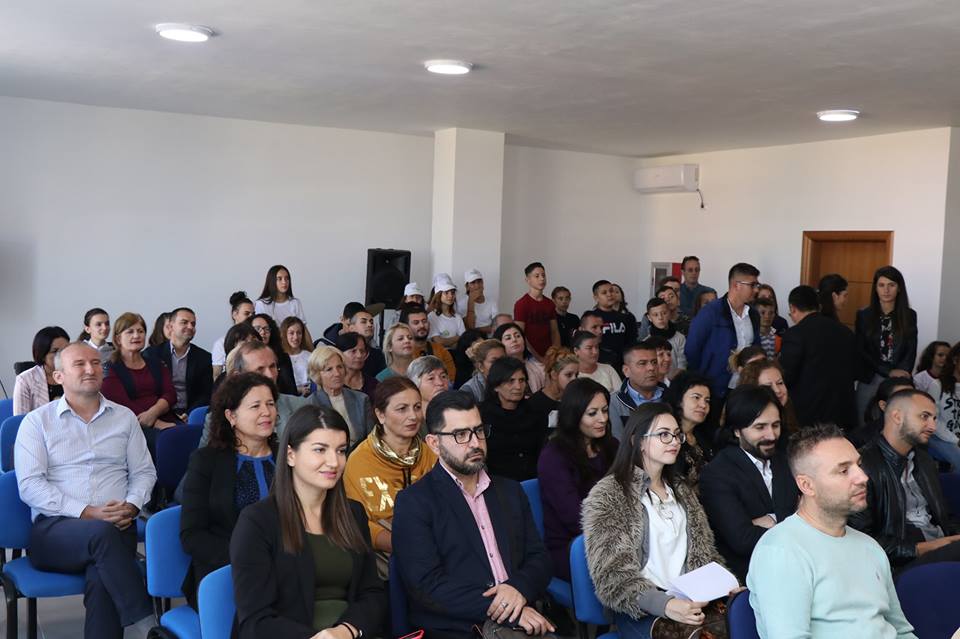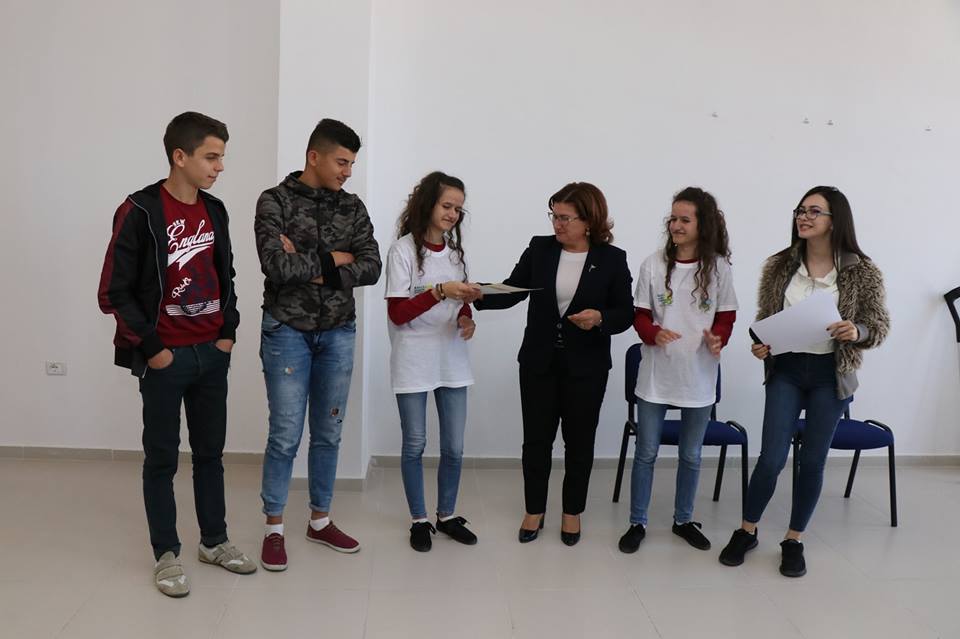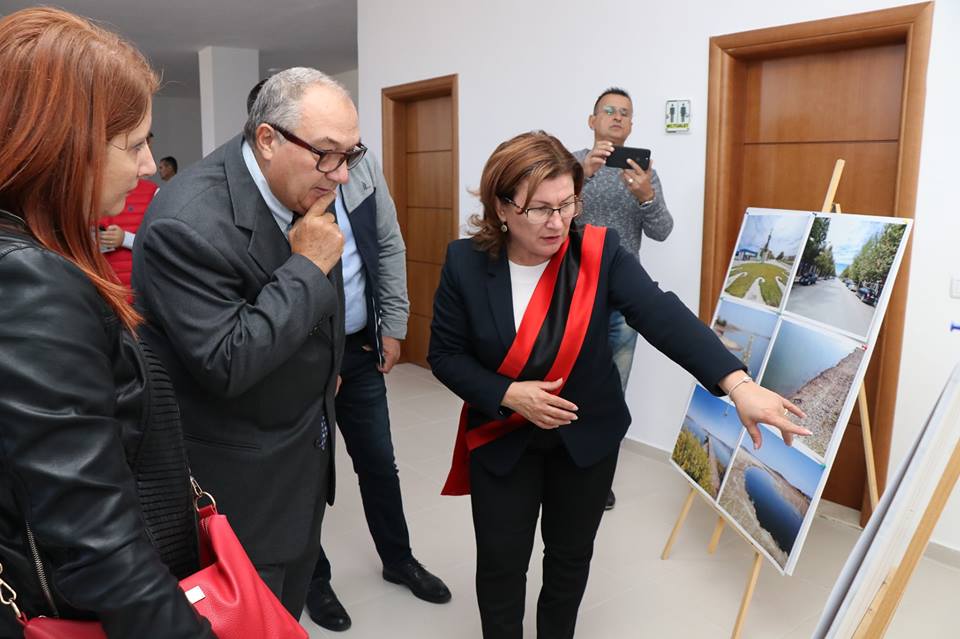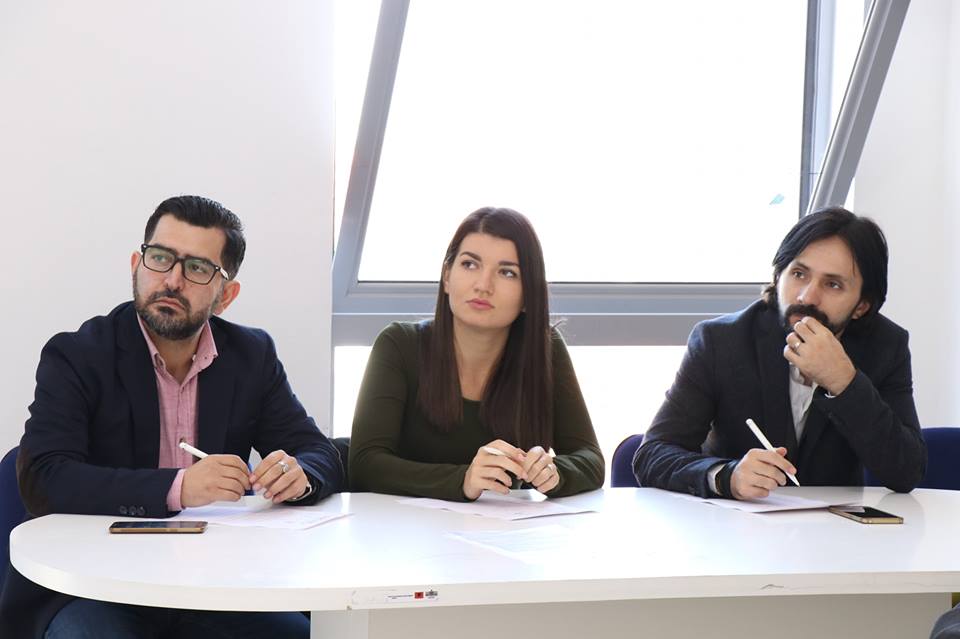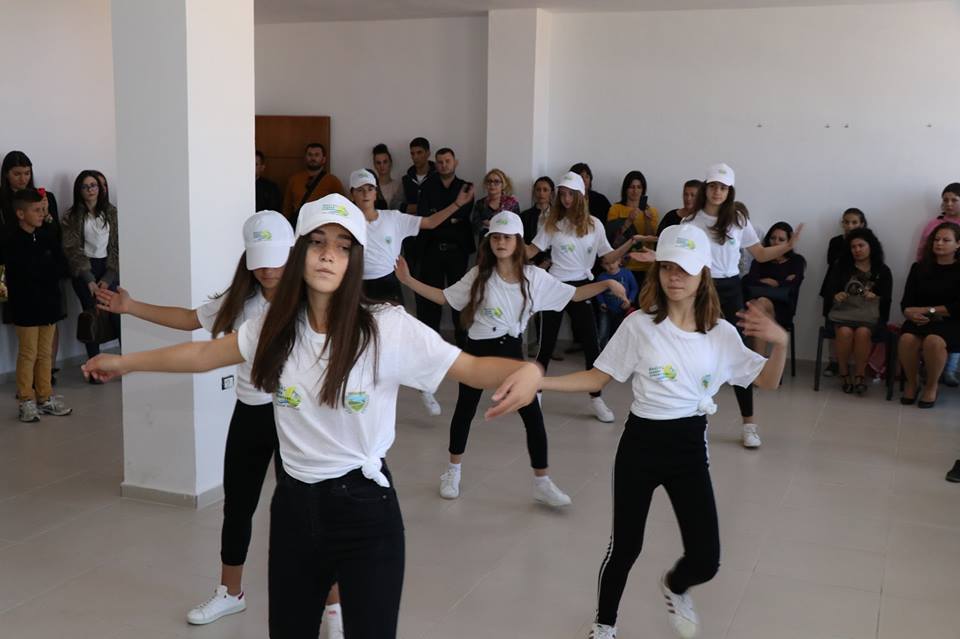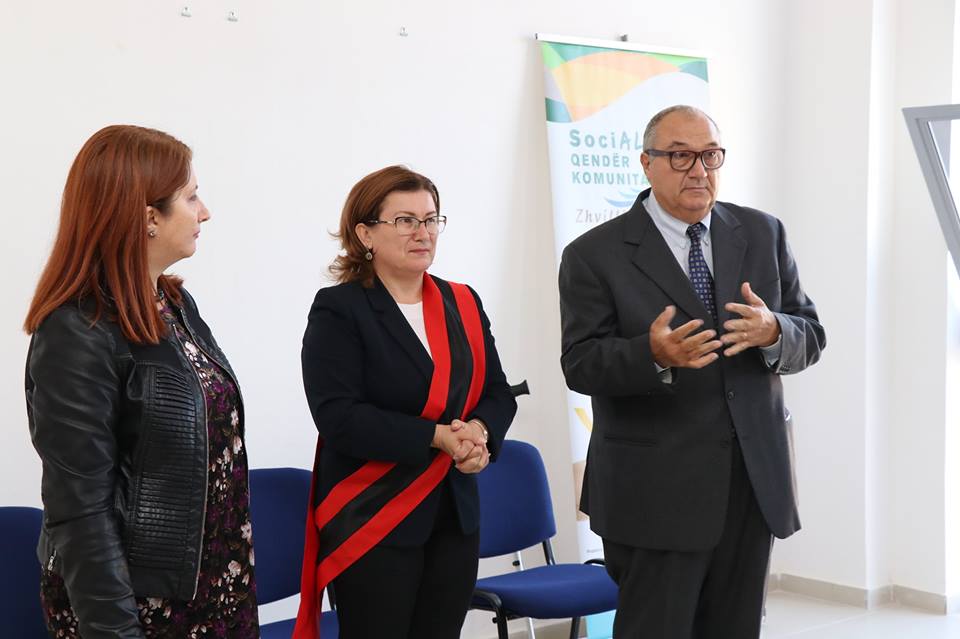Prioritising the places and people that need it the most
The SociAL Community House
Social enterprises for new integrated opportunities of Roskovec citizens in poverty .
The project aims to revitalize community life by fostering social cohesion and integrating vulnerable groups at risk of poverty and exclusion. It enhances access to education, employment programs, culture, and ICT while promoting inclusivity through participatory activities. A key focus is supporting vulnerable groups in gaining labor skills and raising awareness to strengthen community ties, encouraging cooperation for sustainable local development.
Albania
Local
Municipality of Roskovec
Mainly urban
It refers to a physical transformation of the built environment (hard investment)
Yes
2018-10-27
No
No
No
As a representative of an organisation
The overall objective of the project is the improvement and the revitalization of the community life through the social cohesion of the whole population and the integration of all social strata in particular those in the risk of poverty and exclusion by enhancing their access to formal education and informal learning, employment programmes, culture and ICT.
Target groups:Youth,Youth and women at risk of poverty and exclusion ,Unemployed youth and women.
1st specific objective is to establish a SociAL Community House (SCH) in the Municipality of Roskovec for organizing several activities that create the opportunities to all citizens to participate and contribute for a better and friendly atmosphere in their town, and using this Community House as a place where they can learn and share ideas on the actual and future of their development.
2nd specific objective is to stimulate and support the creation of Social Entrepreneurs Group for youth and women as a suitable element for employment of youth and women at risk of poverty and exclusion by enhancing their access to employment programmes.
3rd specific objective is the setting up of a group of qualified staff of municipality and SCH for dealing with social enterprise and the management of the SociAL Community House (SCH).
Achieved outcomes:
SociAL Community House (SCH) established to serve people in the risk of poverty by enhancing learning and employment programmes.
A Strategy and Action Plan for youth activities compiled.
The raised capacities of the municipality staff by project training prog.
The communication and consultation of the Mayor, members of the Municipal Council and municipality staff with citizens for issues concerning with community life and development is improved.
Professional skills of youth and women in need increased in accordance with the demands of the labor market.
Entrepreneurial group created.
Target groups:Youth,Youth and women at risk of poverty and exclusion ,Unemployed youth and women.
1st specific objective is to establish a SociAL Community House (SCH) in the Municipality of Roskovec for organizing several activities that create the opportunities to all citizens to participate and contribute for a better and friendly atmosphere in their town, and using this Community House as a place where they can learn and share ideas on the actual and future of their development.
2nd specific objective is to stimulate and support the creation of Social Entrepreneurs Group for youth and women as a suitable element for employment of youth and women at risk of poverty and exclusion by enhancing their access to employment programmes.
3rd specific objective is the setting up of a group of qualified staff of municipality and SCH for dealing with social enterprise and the management of the SociAL Community House (SCH).
Achieved outcomes:
SociAL Community House (SCH) established to serve people in the risk of poverty by enhancing learning and employment programmes.
A Strategy and Action Plan for youth activities compiled.
The raised capacities of the municipality staff by project training prog.
The communication and consultation of the Mayor, members of the Municipal Council and municipality staff with citizens for issues concerning with community life and development is improved.
Professional skills of youth and women in need increased in accordance with the demands of the labor market.
Entrepreneurial group created.
Social Cohesion
Education & Employment
Vulnerable Group Integration
Community Development
Entrepreneurship & Innovation
Obtainable Objectives & Goals
Unshaken Financial Support – The public allows long-term finances to be upheld due the renting of spaces and profits earned through social enterprises.
Unshakeable Institutional Support – Municipal staff have been socially integrated with the permanent establishment of SCH as a structure.
Policy Advocacy – Developed a municipal plan for social enterprise and youth unemployment strategies with guaranteed sustained support.
Ecological Impact – Renovated an old structure to reuse materials which erases waste and engenders green initiatives.
Social Approach – Focus shift to embedding youth and women through entrepreneurial activities, volunteering, and culture, making a difference today and ensuring change tomorrow.
Additional Pointers
Robust & Multi Dimensional Approach – Incorporates education vertical, employment, and social target groups.
Financial Independence – Combination of municipal funding, fundraising, and social business.
Active Participation – There is the need to mobilize the community for sustained effect.
Unshaken Financial Support – The public allows long-term finances to be upheld due the renting of spaces and profits earned through social enterprises.
Unshakeable Institutional Support – Municipal staff have been socially integrated with the permanent establishment of SCH as a structure.
Policy Advocacy – Developed a municipal plan for social enterprise and youth unemployment strategies with guaranteed sustained support.
Ecological Impact – Renovated an old structure to reuse materials which erases waste and engenders green initiatives.
Social Approach – Focus shift to embedding youth and women through entrepreneurial activities, volunteering, and culture, making a difference today and ensuring change tomorrow.
Additional Pointers
Robust & Multi Dimensional Approach – Incorporates education vertical, employment, and social target groups.
Financial Independence – Combination of municipal funding, fundraising, and social business.
Active Participation – There is the need to mobilize the community for sustained effect.
Aesthetic and Quality of Experience Objectives
Attractive and Inclusive Space – The SociAL Community was created with the purpose of being a sociable an modern hub which all citizens, especially the more vulnerable ones, can relate with.
Cultural Enrichment – It combines art, culture, and creative civic events, which foster community pride and identify citizenship.
Community Engagement – SCH offers a vibrant space for social interaction, strengthening bonds among citizens through participatory activities.
Functional and Comfortable Design – Renovation emphasized the inclusion of modern amenities, multifunctional miljö, and sustainability, leading to an increased overall experience.
Exemplary Aspects
Innovative Cultural Hub – A case of paradigm shift in the design culture and community engagement nexus.
Enhanced Public Experience – Promotes engagement, innovation and fosters social harmony.
Scalable Approach – Can be the basis for other local authorities to develop similar community initiatives.
Attractive and Inclusive Space – The SociAL Community was created with the purpose of being a sociable an modern hub which all citizens, especially the more vulnerable ones, can relate with.
Cultural Enrichment – It combines art, culture, and creative civic events, which foster community pride and identify citizenship.
Community Engagement – SCH offers a vibrant space for social interaction, strengthening bonds among citizens through participatory activities.
Functional and Comfortable Design – Renovation emphasized the inclusion of modern amenities, multifunctional miljö, and sustainability, leading to an increased overall experience.
Exemplary Aspects
Innovative Cultural Hub – A case of paradigm shift in the design culture and community engagement nexus.
Enhanced Public Experience – Promotes engagement, innovation and fosters social harmony.
Scalable Approach – Can be the basis for other local authorities to develop similar community initiatives.
Inclusion goals and their achievments objectives And Development Goals Achievements History Accessibility For All Goal Barrier free space has been enabled for citizens, including physically challenged citizens at The SociaL Community House SCH where people can have the ability to access information, digital content and can physically move freely.
Affordability & Equal Opportunities – All programs, regardless of religion, race, or economic background, an individual is allowed to attend free or low-cost activities, training, and cultural events hosted within the community.
Inclusive Governance Participatory Budgeting – Giving account to citizens for expenditures of local public. Civic Engagement through public hearings and collaborative decision-making in which the municipality works with the people.
Youth, Women, and the Marginalized – Programs and policies focused on education, employment, and social services targeted special focus on youth and women and other marginalized groups.
Universal Design: Accessibility And Inclusion Primary School Community Spaces exemplary aspects And Community Based Empowered People Achieving Active participation in governance and community decision making is the most vital concern towards social Deliberative Democracy.
Replicable Social Model – a way for municipalities to plan and incorporate inclusion in urban development and social policies.
Affordability & Equal Opportunities – All programs, regardless of religion, race, or economic background, an individual is allowed to attend free or low-cost activities, training, and cultural events hosted within the community.
Inclusive Governance Participatory Budgeting – Giving account to citizens for expenditures of local public. Civic Engagement through public hearings and collaborative decision-making in which the municipality works with the people.
Youth, Women, and the Marginalized – Programs and policies focused on education, employment, and social services targeted special focus on youth and women and other marginalized groups.
Universal Design: Accessibility And Inclusion Primary School Community Spaces exemplary aspects And Community Based Empowered People Achieving Active participation in governance and community decision making is the most vital concern towards social Deliberative Democracy.
Replicable Social Model – a way for municipalities to plan and incorporate inclusion in urban development and social policies.
Involvement Of Civil Societies And Citizens In The Project.
Participatory Planning Citizens: From the very beginning citizens were involved by conducting public meetings, polls, and focus groups to determine what the community required and what activities were to be undertaken in the project.
Active Engagement in Implementation: Beneficiaries, in particular, youths, women, and at risk groups, took part in training, working, and cultural programs for better and immediate effect.
Community Ownership & Decision Making: The SociAL Community House (SCH) serves as a community space where local people and civil society organizations engage collaboratively with the local government to plan activities and services for the community.
Strengthened Civil Society Collaboration: Collaborations with NGOs, local companies, and lobby groups expanded the reach of the organization as well as deepened the knowledge base and ensured more resources would be available.
Effects of Citizens & Civil Society Participation
Increased Project Effectiveness: The project was designed in a way that useful for the community it was implemented for.
Improved Social Relationships: There is more joint active participation which fosters a stronger feeling of common identity.
Increased Sustainability: Provided citizens the tools needed to participate and increased the chance of continued impact over time.
Participatory Planning Citizens: From the very beginning citizens were involved by conducting public meetings, polls, and focus groups to determine what the community required and what activities were to be undertaken in the project.
Active Engagement in Implementation: Beneficiaries, in particular, youths, women, and at risk groups, took part in training, working, and cultural programs for better and immediate effect.
Community Ownership & Decision Making: The SociAL Community House (SCH) serves as a community space where local people and civil society organizations engage collaboratively with the local government to plan activities and services for the community.
Strengthened Civil Society Collaboration: Collaborations with NGOs, local companies, and lobby groups expanded the reach of the organization as well as deepened the knowledge base and ensured more resources would be available.
Effects of Citizens & Civil Society Participation
Increased Project Effectiveness: The project was designed in a way that useful for the community it was implemented for.
Improved Social Relationships: There is more joint active participation which fosters a stronger feeling of common identity.
Increased Sustainability: Provided citizens the tools needed to participate and increased the chance of continued impact over time.
The role of municipality of Roskovec, was to led the project, ensured infrastructure development, and provided administrative support. Citizens participated in consultations, decision-making, and activities. The added value of its role was to increase community ownership and ensured the project met local needs.
Youth Act Center contributed with its expertise, training programs, and employment opportunities for beneficiaries, this gave strength to social enterprise initiatives and enhanced local economic impact.
Government and Public Institutions aligned project goals with national strategies, facilitated partnerships, and supported policy integration. An added Value was ensured long-term sustainability and compliance with national development plans.
European partners provided funding, best practices, and networking opportunities. That enabled knowledge transfer, increased project visibility, and ensured alignment with EU social inclusion policies.
Youth Act Center contributed with its expertise, training programs, and employment opportunities for beneficiaries, this gave strength to social enterprise initiatives and enhanced local economic impact.
Government and Public Institutions aligned project goals with national strategies, facilitated partnerships, and supported policy integration. An added Value was ensured long-term sustainability and compliance with national development plans.
European partners provided funding, best practices, and networking opportunities. That enabled knowledge transfer, increased project visibility, and ensured alignment with EU social inclusion policies.
The project's scope incorporated all the relevant disciplines to achieve a cohesive and sustainable outcome. Social Sciences and Community Development helped in fostering inclusiveness, citizen participation, and social cohesion. Education and Employment Programs helped create training strategies that uplifted women and youth by improving their skills and expanding job opportunities for them. The contribution from urban planning and architecture ensured that the SociAL Community House was accessible, functional, and welcoming to all the members of the community.
Economics and Social Entrepreneurship helped devise sustainable business models which created job opportunities alongside maintaining the project's financial sustainability. The addition of cultural and creative industries further enriched the community by using arts, culture, and ICT as tools for engagement, skills development, and self-expression.
Professionals coming from these fields were involved in an intense collaborative manner, which helped combine social, economic, and cultural issues into a single solution. This form of interdisciplinary collaboration enhanced the effectiveness of the project, making it inclusive and economically feasible, but also culturally interesting and sustainable in other communities.
Economics and Social Entrepreneurship helped devise sustainable business models which created job opportunities alongside maintaining the project's financial sustainability. The addition of cultural and creative industries further enriched the community by using arts, culture, and ICT as tools for engagement, skills development, and self-expression.
Professionals coming from these fields were involved in an intense collaborative manner, which helped combine social, economic, and cultural issues into a single solution. This form of interdisciplinary collaboration enhanced the effectiveness of the project, making it inclusive and economically feasible, but also culturally interesting and sustainable in other communities.
This project differentiates itself on applying a unique method with a positive social impact by incorporating social inclusion, education, employment, and community engagement into one sustainable model. Most projects try to tackle these areas separately, but the SociAL Community House tackles them within one integrated and social framework.
One key innovation is the development of a social enterprise learning center that provides free training, employment services, and cultural activities for vulnerable groups. Unlike classical placement oriented employment programs, this project prepares beneficiaries for self employment by providing them with adequate training and resources.
This program also adopts inclusive governance through the active engagement of citizens in planning and decision making through constant public meetings, which is almost non-existent at the local government level. Its use of social entrepreneurship as a sustainability strategy also distinguishes it from other initiatives by realized funding impact beyond the defined project period.
These three components of education, social innovation, and economic empowerment change the way of attending the societal problem, and can be used in other communities towards being innovative and responsive making this a remarkable one of a kind project.
One key innovation is the development of a social enterprise learning center that provides free training, employment services, and cultural activities for vulnerable groups. Unlike classical placement oriented employment programs, this project prepares beneficiaries for self employment by providing them with adequate training and resources.
This program also adopts inclusive governance through the active engagement of citizens in planning and decision making through constant public meetings, which is almost non-existent at the local government level. Its use of social entrepreneurship as a sustainability strategy also distinguishes it from other initiatives by realized funding impact beyond the defined project period.
These three components of education, social innovation, and economic empowerment change the way of attending the societal problem, and can be used in other communities towards being innovative and responsive making this a remarkable one of a kind project.
The project followed a community-driven and inclusive approach to ensure that it was not another top-down initiative but rather one that was designed and shaped by the very people that it sought to support. Residents, youth and women who were at risk of exclusion were consulted from the onset so that they got a chance to voice what mattered most for them. These voices integrated into the SociAL Community House, which became a space that serves its purpose.
Instead of solving problems in silos, the project gathered experts from various fields of education, social work, urban planning, and entrepreneurship to help design and develop complimentary solutions. Training did not just focus on acquiring a skill; they were actually tied to employment opportunities or the launching of social enterprises. The space was not just a center, but a focal point for innovation, employment, and civic participation.
Its focus on sustainability sets this approach apart from others. Rather than depending purely on outside funding, the project included mechanisms to continue operating, such as socially responsible businesses that profit and reinvest them into the community. Instead of simply monitoring the project, the local government and NGOs became partners to ensure that it would succeed beyond its initial phase.
By putting people at the heart of the process, combining expertise from different fields, and thinking long-term, the project became more than just a social initiative—it became a blueprint for inclusive and lasting change.
Instead of solving problems in silos, the project gathered experts from various fields of education, social work, urban planning, and entrepreneurship to help design and develop complimentary solutions. Training did not just focus on acquiring a skill; they were actually tied to employment opportunities or the launching of social enterprises. The space was not just a center, but a focal point for innovation, employment, and civic participation.
Its focus on sustainability sets this approach apart from others. Rather than depending purely on outside funding, the project included mechanisms to continue operating, such as socially responsible businesses that profit and reinvest them into the community. Instead of simply monitoring the project, the local government and NGOs became partners to ensure that it would succeed beyond its initial phase.
By putting people at the heart of the process, combining expertise from different fields, and thinking long-term, the project became more than just a social initiative—it became a blueprint for inclusive and lasting change.
The uniqueness of this project is not only about one community, but it is about creating a model that can be used anywhere. The SociAL Community House does not have any geographical boundaries;rather it focuses on uniting people, empowering them to learn, grow, and build opportunities for themselves. Such an initiative can be useful for any town, city, or even every country.
At the core of this project is a simple but powerful notion of listening to what people have to say and providing services as per their needs. This type of concept can be utilized anywhere. For a small town suffering from youth unemployment or a big city trying to foster social bonds, the community driven approach is helpful in making people feel more engaged and empowered.
The blending of education, employment, and social entrepreneurship seems to be another easily transferable concept for this project. Instead of providing just training, it enables people to fully utilize their skills through jobs or starting small businesses that give back to the community. Such an initiative creates a cycle of giving that any place can adopt.
This initiative was designed in such a way that is supported by social enterprises and municipalities. This makes it most exciting as it can sustain itself without any external funding.
That means other communities can adapt this model without worrying about short-term impact. It’s proof that with the right approach, real, lasting change is possible—no matter where you are.
At the core of this project is a simple but powerful notion of listening to what people have to say and providing services as per their needs. This type of concept can be utilized anywhere. For a small town suffering from youth unemployment or a big city trying to foster social bonds, the community driven approach is helpful in making people feel more engaged and empowered.
The blending of education, employment, and social entrepreneurship seems to be another easily transferable concept for this project. Instead of providing just training, it enables people to fully utilize their skills through jobs or starting small businesses that give back to the community. Such an initiative creates a cycle of giving that any place can adopt.
This initiative was designed in such a way that is supported by social enterprises and municipalities. This makes it most exciting as it can sustain itself without any external funding.
That means other communities can adapt this model without worrying about short-term impact. It’s proof that with the right approach, real, lasting change is possible—no matter where you are.
This project addresses large scale challenges such as unemployment, social exclusion, and inaccessibility to education. While constructive solutions are devised at higher levels, they are implemented at the local levels to empower citizens.
Globally, one of the biggest issues is economic inequality, especially for youth and women who are often underrepresented. Rather than sympathizing with the situation, this project provides the tools necessary to overcome it, which includes skill development workshops, employment opportunities, and even financial support for business startups. The aim is not to provide charity, but to empower people to sustain themselves without relying on precarious job markets.
Another main concern is feeling disassociated or forgotten. The SociAL Community House is not a simple training facility. It’s a hub where people collaborate, exchange ideas, educate one another, and socialize, building true relationships. It empowers individuals and provides a sense of community, something a lot of societies lack.
And finally, this project proactively plans for the future, something many social programs often struggle with. It is unfortunate how many great initiatives tend to vanish once the funding runs out, but this was designed in a way that combines municipal support with social enterprises which can sustain themselves.
Globally, one of the biggest issues is economic inequality, especially for youth and women who are often underrepresented. Rather than sympathizing with the situation, this project provides the tools necessary to overcome it, which includes skill development workshops, employment opportunities, and even financial support for business startups. The aim is not to provide charity, but to empower people to sustain themselves without relying on precarious job markets.
Another main concern is feeling disassociated or forgotten. The SociAL Community House is not a simple training facility. It’s a hub where people collaborate, exchange ideas, educate one another, and socialize, building true relationships. It empowers individuals and provides a sense of community, something a lot of societies lack.
And finally, this project proactively plans for the future, something many social programs often struggle with. It is unfortunate how many great initiatives tend to vanish once the funding runs out, but this was designed in a way that combines municipal support with social enterprises which can sustain themselves.
The project has had a positive impact and improved the lives of people in the community.
A large number of youth and women have been trained in entrepreneurship, non formal education, and enhanced their chances of gaining employment or starting their own business through the SociAL Community House. The formation of a Young and Women entrepreneurs Club also enabled participants to scale up social enterprises that create jobs opportunities and boost the local economy.
The project also encouraged social interaction through the establishment of a safe space where cultural activities, community dialogues and discussions could be hosted which enabled greater civic engagement and improved relationships between citizens and local government.
Employees in the municipalities were trained on managing social projects, which allowed the project to be sustainable, while businesses started to employ new trained people, creating more economic opportunities.
The work enabled through the integration of education, employment, and social entrepreneurship transformed the community as well as individual people, making the region a model to be emulated in promoting inclusiveness and sustainable development.
This project has had deeply positive results, enchancing people's lives and making a difference in the community.
Over 300 youth and women have been trained in different aspects of employability through the SociAL Community House.
A large number of youth and women have been trained in entrepreneurship, non formal education, and enhanced their chances of gaining employment or starting their own business through the SociAL Community House. The formation of a Young and Women entrepreneurs Club also enabled participants to scale up social enterprises that create jobs opportunities and boost the local economy.
The project also encouraged social interaction through the establishment of a safe space where cultural activities, community dialogues and discussions could be hosted which enabled greater civic engagement and improved relationships between citizens and local government.
Employees in the municipalities were trained on managing social projects, which allowed the project to be sustainable, while businesses started to employ new trained people, creating more economic opportunities.
The work enabled through the integration of education, employment, and social entrepreneurship transformed the community as well as individual people, making the region a model to be emulated in promoting inclusiveness and sustainable development.
This project has had deeply positive results, enchancing people's lives and making a difference in the community.
Over 300 youth and women have been trained in different aspects of employability through the SociAL Community House.

